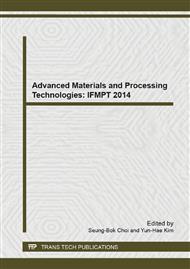p.579
p.583
p.588
p.592
p.596
p.601
p.605
p.612
p.617
Orthogonal Experimental Study on Moulding Conditions of Amino Moulding Plastic
Abstract:
In this paper, the moulding conditions of urea-formaldehyde resin were optimized to prepare moulding plastic with good mechanical properties using orthogonal experimental design method. The effects of moulding temperature, pressure and pressing time on the impact strength and blending strength of urea-formaldehyde resin were studied and analyzed. The results showed that moulding temperature had most noticeable influence on the impact strength and blending strength of urea-formaldehyde moulding compounds. The ratio F of moulding temperature to the impact strength was 2.077; the ratio F of moulding temperature to blending strength was 1.082. The most optimum conditions of preparing samples for testing the impact strength were that moulding temperature was 155 °C, pressure was 30 MPa and pressing time was 12 min; and the optimum moulding temperature of preparing samples with high blending strength was 155 °C, pressure was 25 MPa and pressing time was 5 min.
Info:
Periodical:
Pages:
596-600
Citation:
Online since:
February 2014
Authors:
Price:
Сopyright:
© 2014 Trans Tech Publications Ltd. All Rights Reserved
Share:
Citation:


